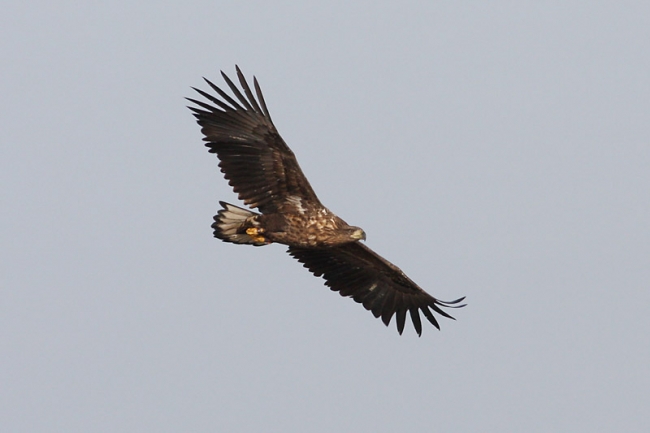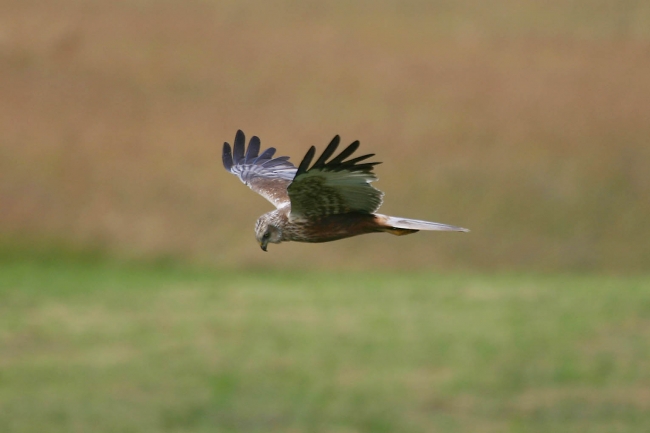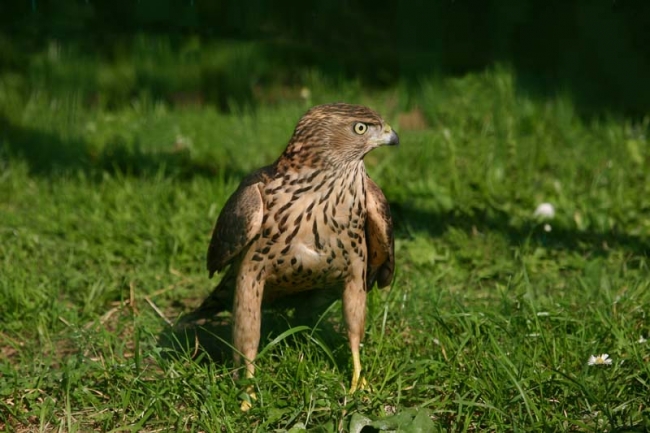On my plot, which extends a little more than a standard-sized garden, a total of 19 raptors and four species of owls (but all recorded species have been seen from my veranda)
RAPTORS
White-tailed Eagle.
Increasing, recorded regularly, breeding from 2020/2021 onwards. Most frequently seen in March to April and autumn, though increasingly throughout the summer and, additionally, adults were seen in mid-winter in 2015, 2016, 2018 and 2020. Most records are of birds flying over, but occasionally roosts in the forest. Highest counts (not including breeding birds) were three adult birds on 11 March 2012, three on several dates in February 2020 (two adults and one immature roosting in the forest) and two pairs together on 10 May 2020. Of note, began to breed from 2020 - a pair appeared to be breeding in forest immediately adjacent to my land in 2020, the pair displaying frequently in May and June, a second pair engaging on one occasion. Birds thereafter seen throughout the summer. Confirmed breeding in 2021, the nest located adjacent to my land and two young fledged, these often present in the flood forest at the end of August. Breeding again in 2022, almost same location as precious year, fledging one young - adults and juvenile present through August and September.

Osprey.
Occasionally seen overhead in the summer months, breeds nearby and fishes in neighbouring lakes. Earliest spring birds were a single on 10 April 2020 and two on 8 April 2022, though more typical from about 20 April.
Lesser Spotted Eagle.
One pair sometimes breeds in the general area. Additionally, extra birds moderately common some summers and further birds occur on passage. Earliest returnees were on 30 March 2008, 5 April in both 2020 and 2021 and 8 April 2022, more usual mid-April.
Booted Eagle.
One light-phase bird on 25 July 2020, slowly drifting north.
Short-toed Eagle.
A rare bird in Lithuania. One record, a single bird at the forest edge on 18 September 2005.
Black Kite.
Breeds in the area and occasionally seen from mid-April through to autumn, generally singles or pairs, though four birds seen together in July 2005. Formerly more common - annual until 2016, rarer since with just a single record on 31 May 2018, singles on 1 and 5 May 2020 and 12 May 2021.
Marsh Harrier.
Abundant, a daily visitor to the meadows throughout the summer, usually arriving in the first week of April, earliest record one on 23 March 2022. Generally depart in August and early September, latest record one on 2 October 2022. Pairs breed around neighbouring lakes and a pair has bred in an open area in the flood forest in every year since 2018.
Hen Harrier.
Occasional records, generally one or two seen every year, mostly in early spring (dates 17 March-3 April) or late autumn (dates 14-27 October). Highest annual total was three birds in 2022 (two in March, one in September). Birds on 24 August 2015, 29 August 2021 and, to a lesser degree, 21 September 2022 were unseasonally early.
Montagu's Harrier.
Breeds in the general area, arrives from first days of May - frequency on my land varies year to year, almost daily some years, but just an occasional visitor most years.
Pallid Harrier.
A rare bird in Lithuania. Four records, a male on 28 September 2005, a male 15 October 2015, a female on 22 April 2020 and another female on 1 May 2021.
Rough-legged Buzzard.
Relatively rare in late autumn or early spring visitor. First record on 20 October 2004, then almost annual since 2013:
2013. One on 27 October.
2014. One on 29 March.
2016. One on 2 April.
2017. One on 2 March.
2018. One on 4 November.
2019. One on 11 February, one on 20 October.
2020. One on 11 April, one on 10 November.
2021. One on 30 October.
Common Buzzard.
Common year-round. Breeds in or near the forest, hunts over the meadows. Additionally, small numbers winter and regular movements occur on passage. Mid-September to October movements can amount to 10-15 birds/hour, though an exceptional migrating flock of 125 was noted on 13 October 2022, all kettling and slowly drifting south.
Honey Buzzard.
Recorded most summers, particularly later in the season. Fairly common in some seasons, scarce in others. Breeds in the general area.
Sparrowhawk.
Recorded throughout the year, occasionally attacking the feeding station in winter. Most common on autumn passage, especially September to October - up to 20-25 birds per hour often seen drifting south.
Goshawk.
Occasional visitor, usually recorded several times a year, no particular seasonal bias.
Kestrel.
As across Lithuania, generally uncommon. One successful breeding record (2014), but otherwise a scarce passage bird, eight in autumn (one late July, four in August, three in September) and eleven in spring (eight April, three May).
Total records are as following:
2005. One on 15 August, two individuals on 18 September.
2006. One on 20 August.
2011. One on 25 August.
2012. One on 11 August.
2013. Three individuals on 14 April.
2014. Two on 3 May, then a pair settling to breed locally, fledging three young in early August. From this pair, birds remained in the area until September.
2016. One present on 24 April, another on 28 April.
2017. One on 24 April.
2020. One on 25 July.
2021. One on 20 April.
2022. One on 7 May, one 4 September.
Merlin.
Five records:
2010. Female on 21 March.
2020. Female on 7 May, male on 5 September.
2022. Female on 8 April, immature on 25 September.
Red-footed Falcon.
An uncommon passage bird in Lithuania, mostly late summer.
2004. A female on 14 August.
2012. A juvenile on 4 August.
2013. A juvenile on 11 August.
2014. A mini influx with one juvenile on 10 August, another a week later, then four together in early September.
2015. Three different individuals were seen on dates between 5 and 17 September.
2017. One on 20 August.
2018. One on 6-8 September.
2019. One on 31 August, another on 22 September.
2020. Female on 10 September, immature on 12-13 September.
2021. One on 22 August.
2022. Immature on 20 August, female on 28 August.
Hobby.
Arrives in late April to early May (eg 21 April in 2018, 1 May 2020), relatively common some years, less so in others. Recorded almost on a daily basis in summer some years, appears to be declining. Autumn records rare, though include one on 23 September 2021, one on 21 August 2022 and one on 3 September 2022.
OWLS
Eagle Owl. One bird seen, flying in February 2011, heard calling later in the same year.
Tawny Owl. One pair breeds in a nestbox in the flooded forest, occasionally seen or heard through the year.
Long-eared Owl. Common in adjacent pine forests, but only six records on my land - a single bird seen at dusk in November 2005, one on 23 May 2019, one on 16 August 2019, one calling on 18 April 2020, one hunting at dusk on 30 July 2020 and one at night on 21 November 2021. Probably occurs more frequently.
Pygmy Owl. Eight records, all wintering birds at or near my feeders - March 2007, February 2008, February 2010, November 2010, early March 2014 (singing), November 2019 - March 2020, mid-October-November 2020, 12 October - November 2021.













